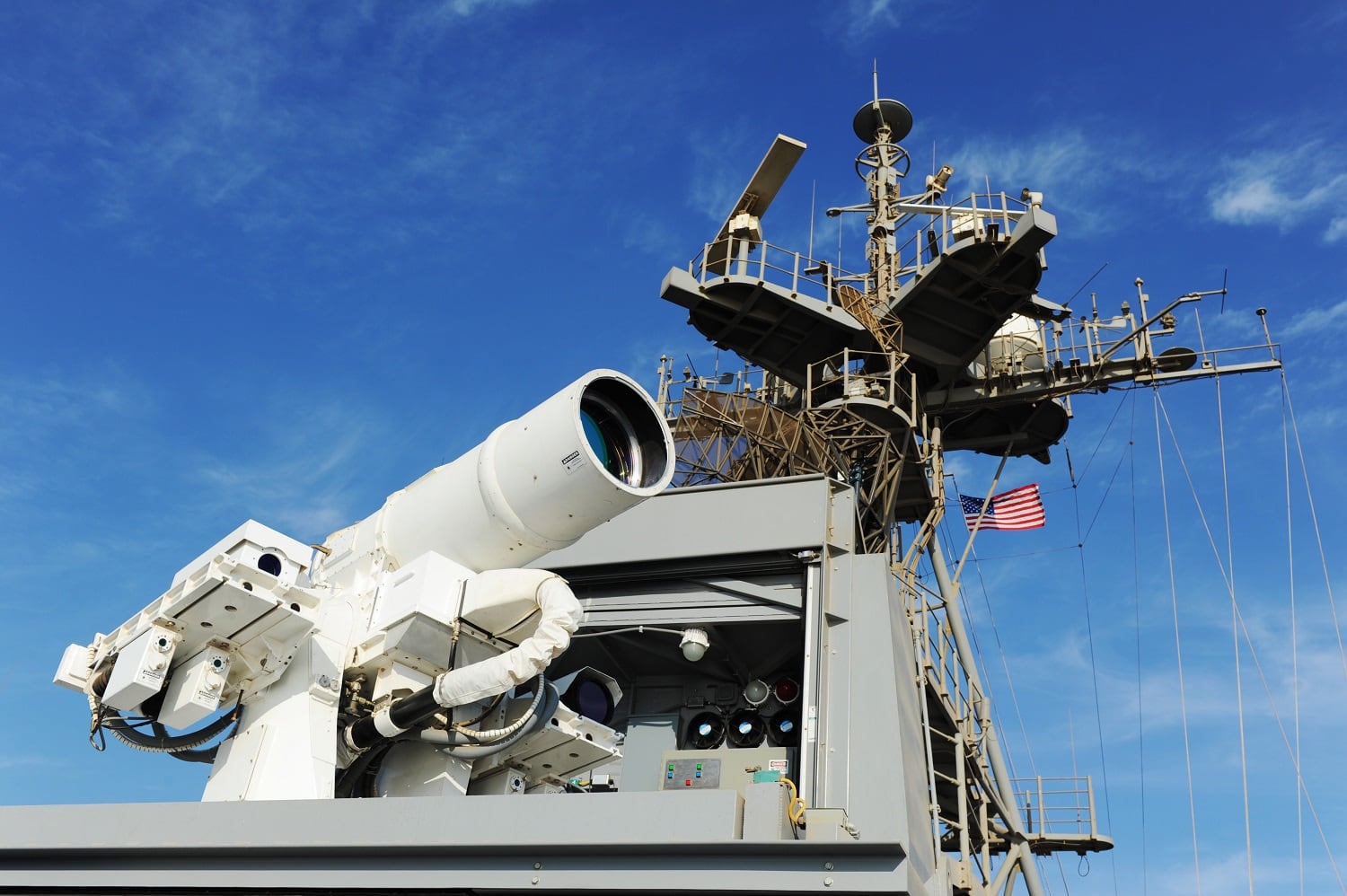David Law and his fellow scientists at the Joint Non-Lethal Weapons Program have a mission ― giving tools that help fill the gap between shouting and shooting.
And the technology has come a long way from flashlights flickering at a nighttime checkpoint.
Troops now and in the not-too-distant future have at their disposal items that include invisible waves that heat a person’s skin from a distance, instantly making them jump out of the way.
RELATED

Ongoing work is aimed at advancements that might allow scientists to alter matter, creating a plasma at any location that could “talk” to the target and ward the area from people who don’t belong there.
At an exhibition this week at the Pentagon, which displayed directed energy, or laser, programs and systems lines of gear filled the booths.
Law works as the technology division chief and chief scientist at the defense department’s nonlethal program. Their work goes beyond lasers, but those were the focus of the event.
He admitted that explaining his division’s work to outsiders is complicated.
“Most people don’t understand nonlethals, most people understand directed energy weapons so you put them together and its mind-blowing,” Law said.
The first point is that nonlethal weapons are not to replace lethal force, when necessary. Instead they provide that option between shouting and shooting.
His division has dazzling lights that get a person’s attention and microwaves that can disable vehicles and vessels, stopping them in their tracks.
The active denial technology is the one that sends out an invisible ray that heats the first 1/64th inch of a person’s skin.
“It really is almost a reflex response,” Law said of the reaction.
When a person is hit with the heat they just instinctually move out of the way of the beam it’s so uncomfortable.
The laser-induced plasma weapon uses very high energy lasers at a very short pulse rate to strip the electrons off a gas, creating plasma, he said. That matter is then used to poke through clothing and drill smaller than microscopic holes in a person’s skin. The drilling doesn’t create permanent damage but triggers nerve responses, making the person very uncomfortable.
“It sounds terrible but really it’s just activating those nerve cells,” Law said.
The far-down-the-road plasma leap is to use similar technology to create the plasma from a far distance away and then modulate radio frequencies through the matter to send sounds.
“I’m trying to get a little plasma ball to speak to you,” Law said.
Now sending acoustics across distances takes excessive amounts of power and involves a lot of interference from natural surroundings and manmade objects, noise.
But with the plasma option, Law said the range isn’t an obstacle.
“Now I can put it anywhere. Range doesn’t make any difference,” Law said. “Put plasma at a target, modulate it and it can create a voice.”
He estimated that the physical plasma development is about five years away on the technology side, adding that there are likely only 30 scientists in the country that understand the concept.
Todd South has written about crime, courts, government and the military for multiple publications since 2004 and was named a 2014 Pulitzer finalist for a co-written project on witness intimidation. Todd is a Marine veteran of the Iraq War.




